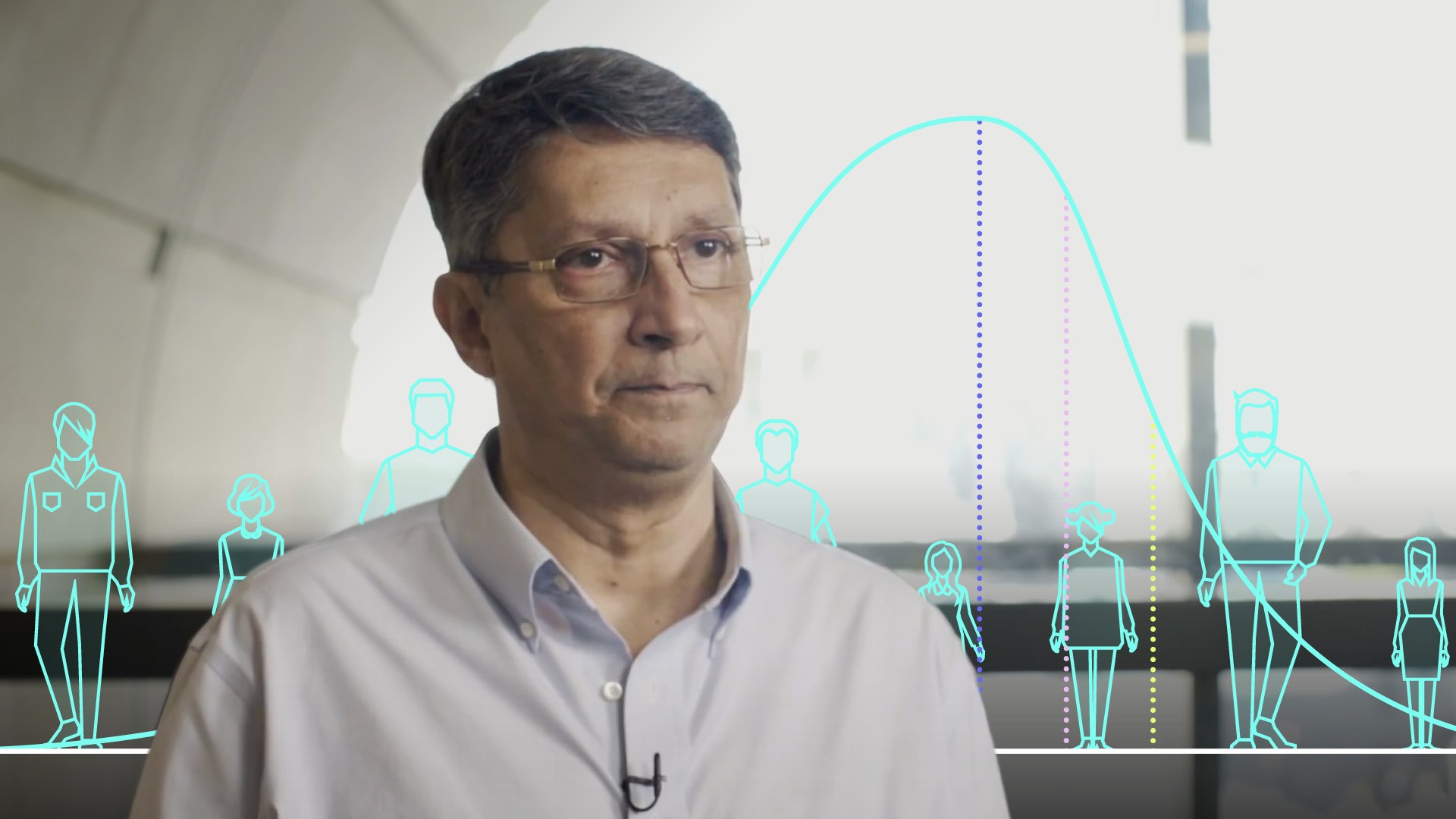
Measures of Central Tendency

Abdulla Javeri
30 years: Financial markets trader
Abdulla outlines measures of Central Tendency, and explains the differences between calculating the Mean, Median and Mode.
Abdulla outlines measures of Central Tendency, and explains the differences between calculating the Mean, Median and Mode.

Measures of Central Tendency
3 mins 18 secs
Key learning objectives:
Understand the calculation of mean
Understand the calculation of median
Understand the calculation of mode
Learn how the three measures are related to eachother
Overview:
A quick revision on mean, mode and median and how the three measures are related.
Summary
How do you calculate mean?
The mean – or arithmetic average – is probably the most frequently used measure of Central Tendency. To find the average height of people in a room, you calculate the total of their heights and divide by the number of people.How do you calculate median?
To find the median, you line up people in a room from shortest to tallest, take people away from either end until you are left with the person in the middle, and their height is the median height. If there are two people left standing, the median is the average of their heights.How do you calculate mode?
The mode is the most frequently occurring number in a room of people. If each person in the room is of a unique height then there is no mode. If two or more people are of the same height, that is the mode. Logic would suggest that it’s possible to have more than one mode in a set of data.How are the three measures related?
The relation between mean, median and mode is dependent on the distribution of the data. If the data is symmetrically distributed, all three measures will be approximately the same. If the distribution is skewed to one side, the numbers will diverge. If there were an unusually large number of tall people in a room, the data will be skewed to the right, or positively skewed. And vice versa. The mode will be the peak of the distribution, the median will lie to its left or right depending on the direction of the skew and the mean will lie beyond the median.
Abdulla Javeri
Abdulla’s career in the financial markets started in 1990 when he entered the trading floor of the London International Financial Futures Exchange, LIFFE, and qualified as a pit trader in equity and equity index options. In 1996, Abdulla became a trainer for regulatory qualifications and then for non-exam courses, primarily covering all major financial products.
There are no available Videos from "Abdulla Javeri"

